River Berkel
River Berkel – connecting Muensterland and Achterhoek
The headwaters of the Berkel are in the area of Billerbeck on the western edge of the Baumberge hills. It meanders westwards through Muensterlaender Bay for about 114 km, passing through the towns of Billerbeck, Coesfeld, Gescher, Stadtlohn and Vreden before it reaches the Netherlands. There the Berkel, now a proper river, flows through Eibergen, Borkulo and Lochem to Zutphen and then into the Ijssel river.
Between Billerbeck and Zutphen, the Berkel drops an altitude of 105 metres, 80 metres of which is in Germany between the Baumberge hills and the border near Vreden. Over centuries dams have been built in several places, allowing to generate a wide range of energy from hydropower.
There used to be trade routes connecting villages along the Berkel, also across the border. Until the second half of the 18th century, the Berkel was navigable from Coesfeld. Rafts and flat-bottomed boats called "Berkelzompen" were used to transport food, pottery, wooden items, sandstone and other materials. On the German side, navigation often came to a standstill due to frequent times of low water and lack of maintenance of the locks in Vreden, Stadtlohn and Gescher.
On the Dutch side, commercial shipping continued in many places until the end of the 19th century and today, boating for tourists is going strongly. Historical replicas of the boats are used for this in Eibergen, Borculo, Lochem and Almen.
On the German side, the Berkel winds its way through the landscape, whereas the Dutch straightened the river and introduced water management. The river looks more like a canal in some places, where the original watercourse is hardly visible. Now, efforts are being made to restore sections of the Berkel and the surrounding Berkelaue floodplains to its former natural state. This has been successfully implemented between Almen and Zutphen and also in Recken in compliance with the European directives for the restoration of running waters.
On the German side, almost 40 km of the Berkel floodplain has been declared a high-level protected area under the European nature conservation directive (flora fauna habitat).
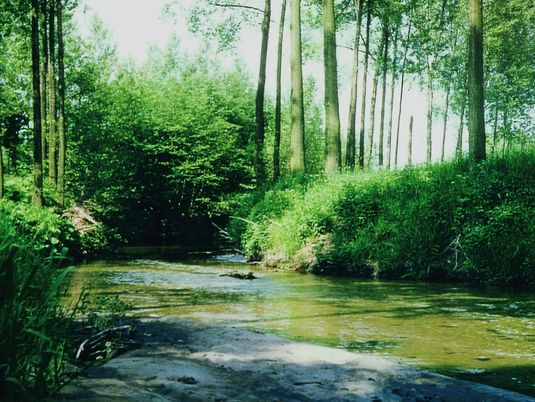
Wechselvolle Uferzone
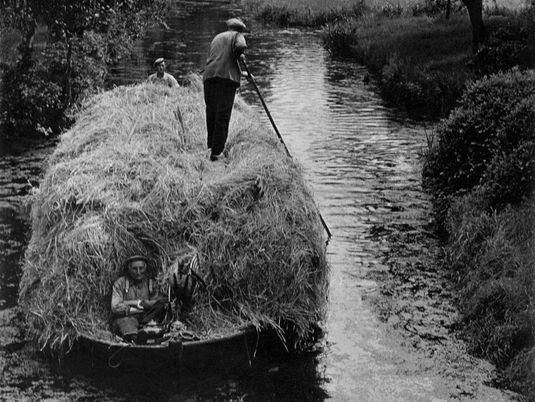
Historische Berkelschifffahrt
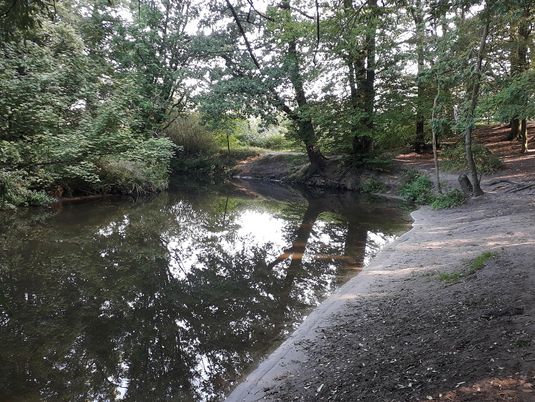
Berkelbogen Nähe Haus Hall
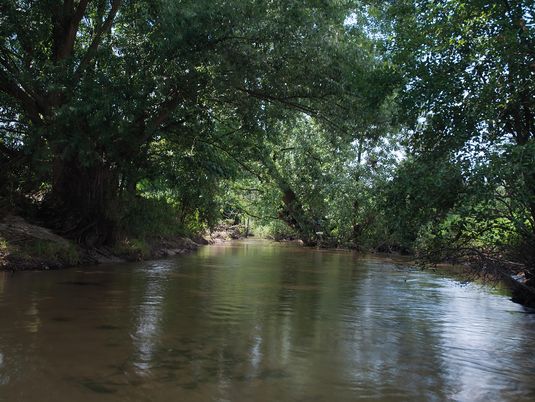
Ruhige Flusspassage
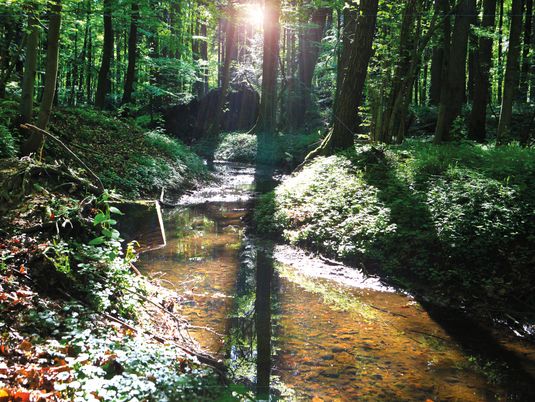
Zufluss aus Remmelts Busch
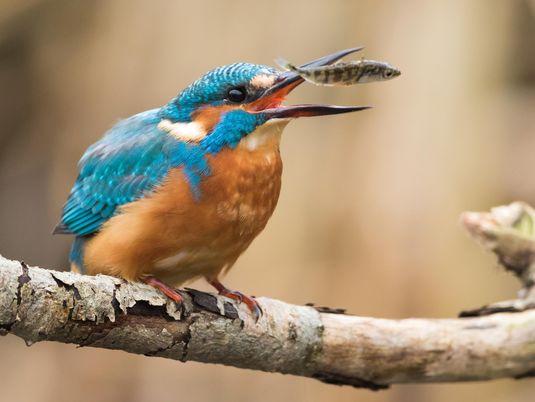
Eisvogel – gern gesehener Gast
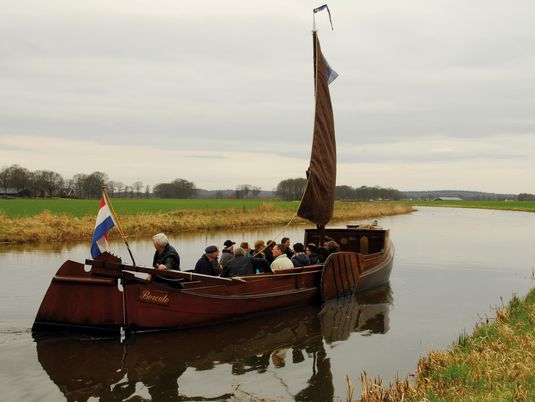
Nachbau des Berkelzomp
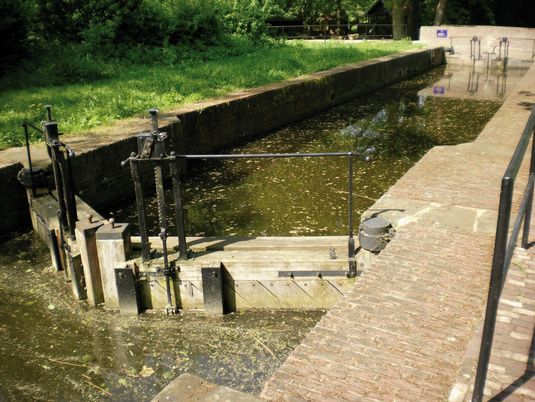
Berkelschleuse bei Eibergen (NL)
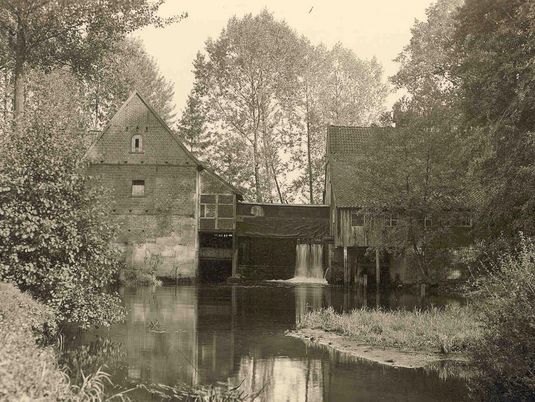
Stauwehr Schulze Egberding
Energy from Berkel hydropower
Water mills and weirs - historic power sources
Mills and dams were built on the slopes through which the Berkel flowed as early as the 14th century. In the area of Gescher, "Alfers’ Mill" and the mill complex of Schulze Egberding were built not far from the chapel in Tungerloh. There were additional barrages near the Schulze Scholle and Schulze Bäing farms.
The oldest mill came into the possession of the Schulze Alfers family in 1858 and operated as a grain, oil and sawmill. The grain and oil mill was on the east side of the Berkel and the sawmill on the west, driven by a connecting line shaft spanning the Berkel. The appearance of the mill changed constantly over the years. Traces of the original buildings are still visible today on parts of the façade.
In 1924 two turbines were installed to generate electricity with a capacity of 24 kW/h. These turbines were operated until 1954. Operation ceased in 1957, when the mill was converted into a residential building.
New hydropower plant and fish ladder at Alfers’ Mill
Since 2011 electricity is again generated at this location, using a hydroelectric screw conveyor. Now, between 160 and 200 MW/h are generated annually, depending on whether there are low water levels or floods. This amount can supply 50 to 60 standard households with electricity per year. Compared to conventional power generation, it saves about 140 tons of CO² per year.
A fish ladder consisting of 31 steps and constant flow conditions was installed during construction work. It enables fish to easily overcome 3.1 metres in height when swimming upstream. Nature observers have recorded that approximately 5,000 fish have been up and down the fish ladder over a 6-month period.
These construction measures of the town's sewage works generate regenerative energy. Thus Gescher contributes to the passability of flowing waters in accordance with the European water framework directive. The measures were funded by the State of North Rhine-Westphalia and, as a result, this section of the Berkel river has been significantly upgraded in terms of water ecology.
Further information is available on information boards at the weir next to the fish ladder, about 250 metres from this location.
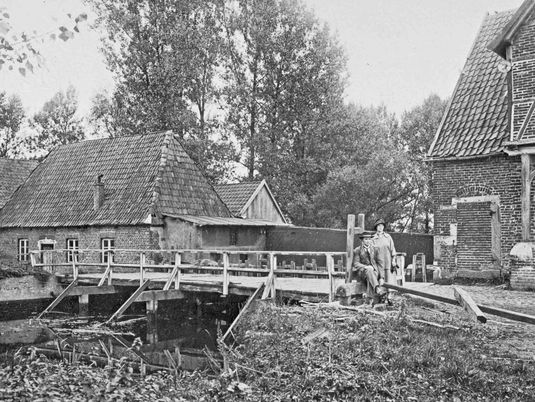
Alfers Mühle um 1900
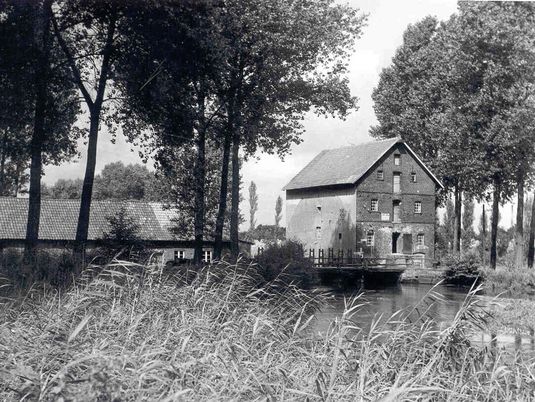
Stauwehre und Mühlen
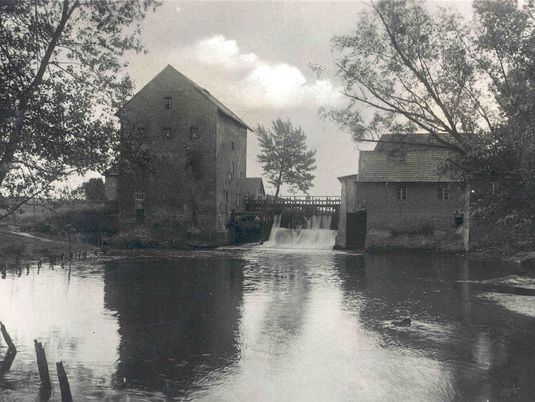
Bündelung der Wasserkraft
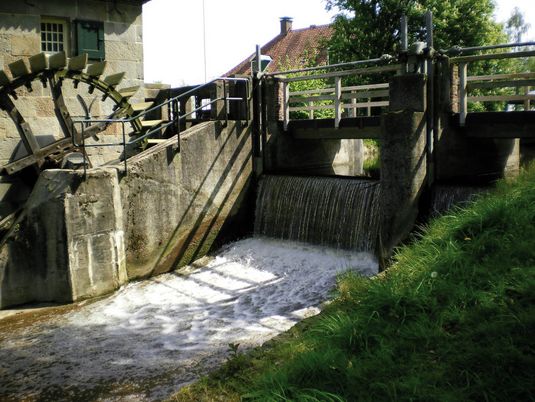
Historisches Stauwehr
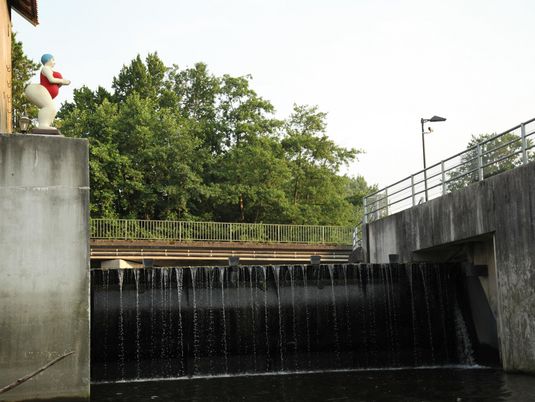
Modernes Stauwehr
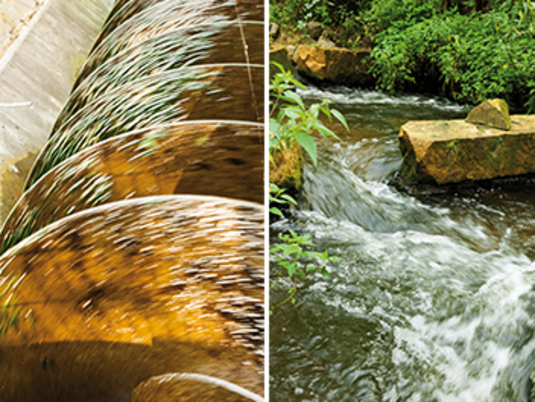
Wasserkraftspindel / Fischtreppe
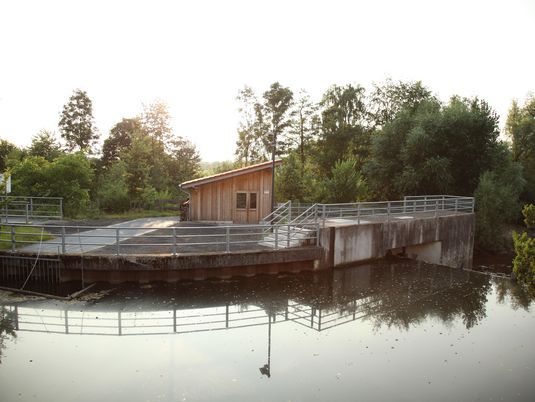
Dreiklang aus Wasserkraft
Tourism along the Berkel
Tourism along the Berkel - nature and places of interest on both sides of the border
Until a few years ago, tourism in Muensterland mainly focused on typical sights such as museums, castles, churches and historic town centres. Today, the manifold natural landscapes awake more and more interest, including fens and moorland, quarries, rivers and lakes. This also holds true for tourism along the Berkel river, especially the cycle route from Billerbeck to Zutphen in the Netherlands. This cross-border route has a length of about 130 km and was officially opened in 2011.
There is not only the river with its varied banks and zones of wetland, but also towns and villages on both sides which offer numerous highlights along the way. Take, for instance, the tranquil town centre of Billerbeck with its Ludgerus Cathedral, visible from afar, the Walkenbrücker Gate in Coesfeld or the bell town of Gescher with its museums. Tourists also love to visit Stadtlohn as the town of pottery and Vreden with its new museum "Kult" and its museum of local history.
The Dutch towns of Eibergen, Borculo, Lochem and Zutphen have medieval centres, museums, imposing churches and town fortifications. The remains of the Berkel gate in Zutphen is only one out of many attractions and there are many more interesting sights and facts to be enjoyed on both sides of the border.
Another great experience offered at several places in the Netherlands are river tours on replicas of former Berkelzomp boats.
Have you met “Bathing Anni” yet? She is the best-known figure along river Berkel. The cheerful lady in a red bathing costume has been placed in all German towns along the Berkel from 2015 onwards and some Dutch communities have followed suit. So now, the little statue can be found at prominent places along the banks of the Berkel.
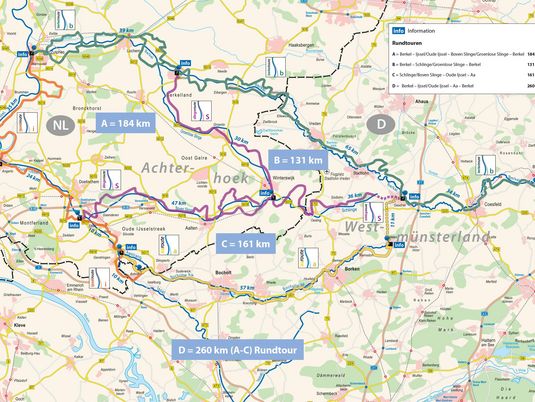
Berkeltourismus grenzüberschreitend
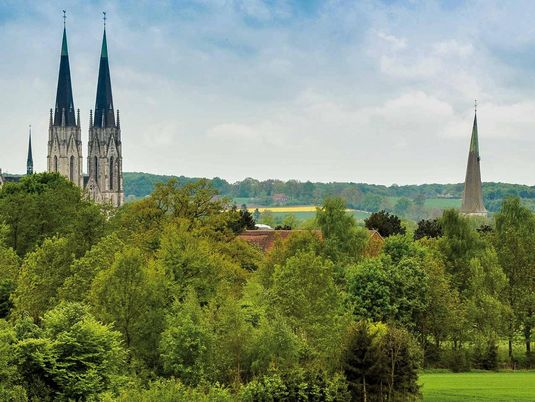
Billerbeck
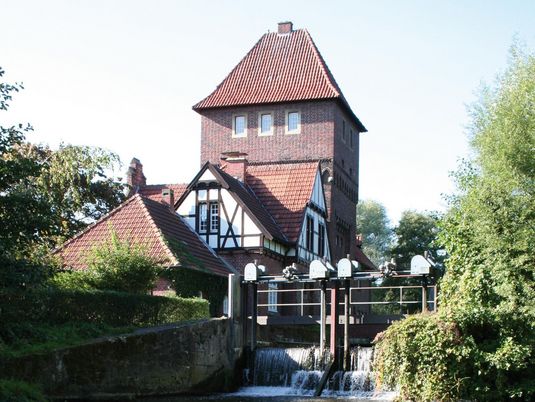
Coesfeld
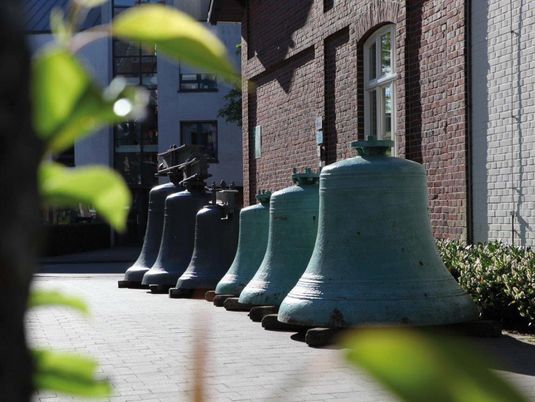
Gescher
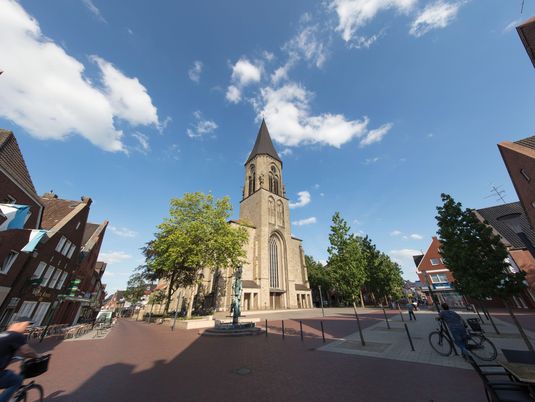
Stadtlohn
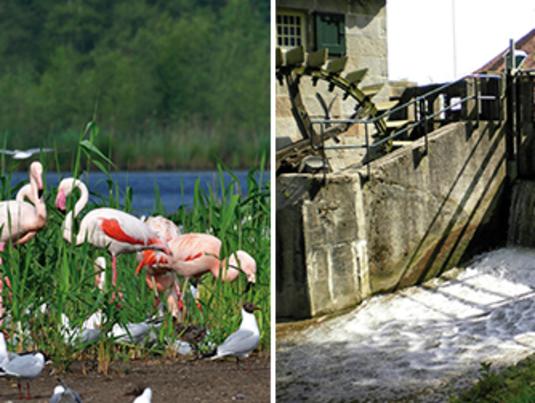
Vreden und Eibergen(NL)
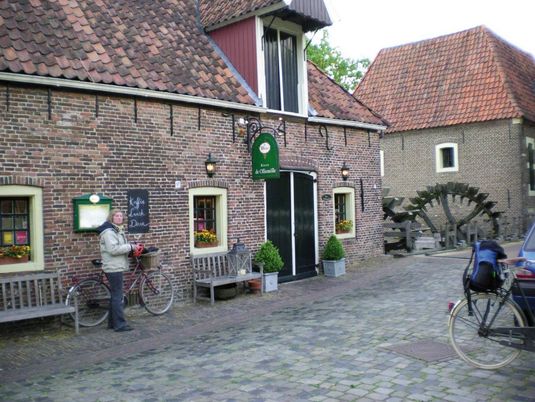
Borculo
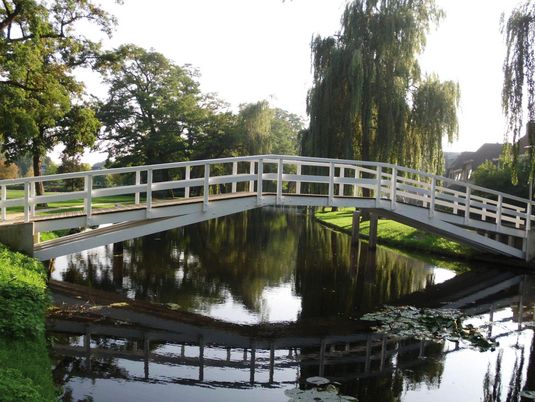
Berkelbrücke in Berkelland
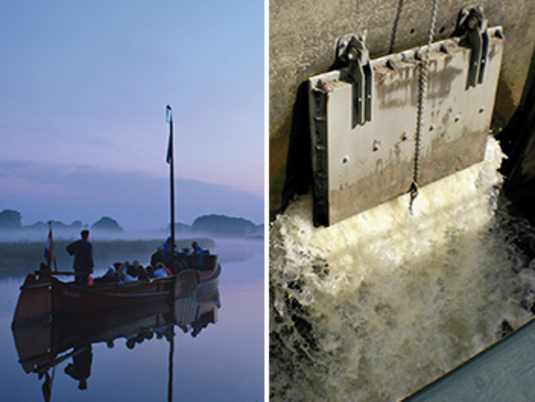
Berkeltour / Die „Mündung“
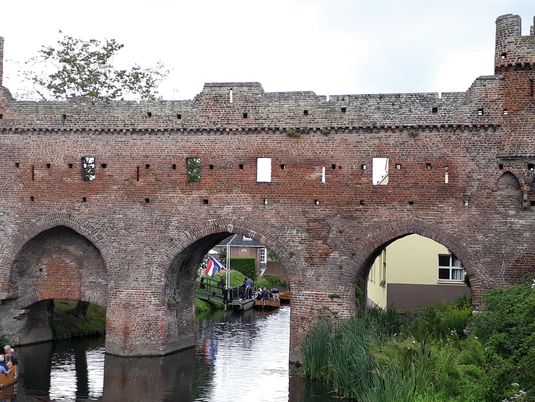
...in Zutphen